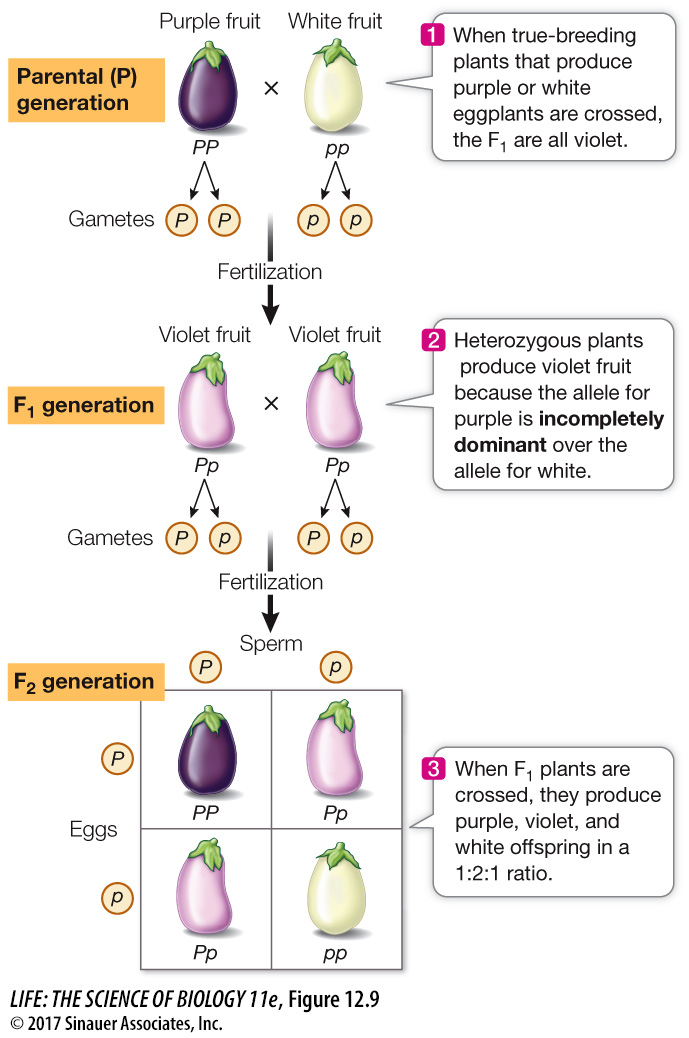Dominance is not always complete
In the pairs of alleles studied by Mendel, dominance is complete in heterozygous individuals. That is, an Rr individual always expresses the R phenotype. However, many genes have alleles that are not dominant or recessive to one another. Instead, the heterozygotes show an intermediate phenotype—at first glance, that appeared to support the old blending theory of inheritance. For example, if a true-breeding eggplant that produces the familiar purple fruit is crossed with a true-breeding white eggplant, all the F1 plants produce violet fruit, an intermediate between the two parents. However, further crosses indicate that this apparent blending phenomenon can still be explained in terms of Mendelian genetics (Figure 12.9). The purple and white alleles have not disappeared, as those colors reappear when the F1 plants are interbred.

Figure 12.9 Incomplete Dominance Follows Mendel’s Laws An intermediate phenotype can occur in heterozygotes when neither allele is dominant. The heterozygous phenotype (here, violet fruit) may give the appearance of a blended trait, but the traits of the parental generation reappear in their original forms in succeeding generations, as predicted by Mendel’s laws of inheritance.
When heterozygotes show a phenotype that is intermediate between those of the two homozygotes, the gene is said to be governed by incomplete dominance. In other words, neither of the two alleles is dominant. Incomplete dominance is common in nature; in fact, Mendel’s study of pea-plant traits is unusual in that all the traits happened to be characterized by complete dominance.
